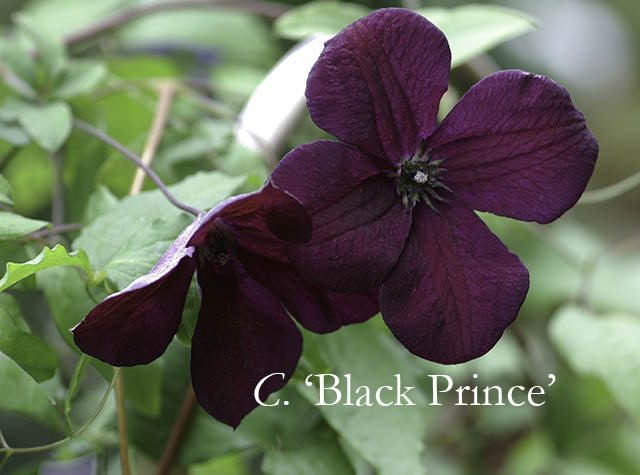In 1996 I ordered my first mail-order clematis. Up until that point I’d only ever bought 2-gallon, 3-gallon and 5-gallon clematis plants, which meant I was used to clematis plants with a larger, established root ball. Since my experience in ordering items from mail-order nurseries had been primarily with seeds and bulbs, I was admittedly not a seasoned pro in the mail-order arena. Thinking back, I don’t remember reading in catalogs about ordering other plants by their age. All I knew was when it came to ordering clematis, I wanted the largest plants available. So, I ordered 3 clematis plants from 2 different mail-order nurseries which were offering their clematis for sale by “age”. The first company sold only 2-year old clematis in 1-gallon containers and the second company’s choices were 2, 3 and 4-year old plants with no description or mention of the size of the container. As you can see from the pictures above, there’s a big difference between the sizes of the 3 “containers” in relation to their supposed “ages”.
I was familiar with the size of young clematis after witnessing a 1½ year-old crop (pictured with production manager, Kathy MacKlean) being grown in 2-gallon pots (see picture above) by the wholesale grower, El Modeno Gardens, in Irvine, CA, after having visited them earlier in the year. If you were like me in 1996 you would have thought that your 4-year old plant was going to be in at least a 2-gallon container, so you can imagine how startled I was when I my 4-year old mail-order clematis arrived in a one-gallon container. Being new to mail-order clematis, it totally mystified me how companies ascertained the age of their plants. To this day I’m still in a quandary as to who exactly has the discretionary power for setting the correct birthday of clematis plants being sold (i.e. how long the plant has been in existence). Had these 2 companies not used age as a basis for selling me their plants I possibly wouldn’t have been as concerned and may never have thought to have taken the picture above comparing size differences.
Since there are no official guidelines regulating what the age of clematis is, I personally would always rather take my chances knowing the container’s dimensions as opposed to the purported age. I think my experience shows why I’m turned off by using age as an indicator for sizing. Happily today most mail-order nurseries and/or online vendors tell you up front what the “size of the container” is that they will be shipping to you.
Bottom line: if you don’t want to be a victim of “The Unknown Root Ball Factor”, always insist on knowing the size of the container that they will be shipping to you. Don’t settle for clematis plants with only vague descriptions such as “age” and/or “medium” or “large”. Instead, patronize legitimate mail-order sources that ship healthy, well-rooted clematis and clearly define on their website the size of their containers.
